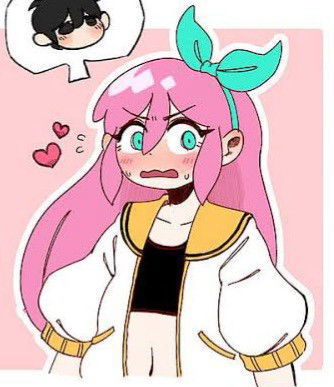The character's personality and role within the narrative heavily influence their hairstyle. Let's explore some common archetypes and the hair that defines them:
The Shonen Protagonist: Spiky and Energetic
Think of Goku from Dragon Ball Z, Naruto Uzumaki, or Ichigo Kurosaki from Bleach. These characters are defined by their boundless energy, determination, and often, their spiky hair.
-
Key Features:
- Verticality: Hair that points upwards, often in multiple directions.
- Sharp Angles: Jagged edges and pointed tips.
- Volume: A sense of fullness and dynamism.
- Signature Strands: Often, a few prominent strands frame the face or stand out dramatically.
-
Why it Works: The upward-pointing spikes convey a sense of ambition, fighting spirit, and an untamed nature. It's visually exciting and suggests a character who is always ready for action. The sharp angles add an element of danger or intensity.
-
Achieving the Look (Cosplay/Styling): This requires strong hold styling products like pomades, waxes, or hairsprays. Blow-drying upwards and using a comb or fingers to shape the spikes is essential. For extreme styles, hairspray and even some light backcombing for volume can be used. The key is to create distinct, solid-looking sections.
The Cool Rival/Antagonist: Sleek and Sharp
Characters like Vegeta from Dragon Ball Z, Sasuke Uchiha from Naruto, or Levi Ackerman from Attack on Titan often sport sleeker, more controlled, yet equally striking hairstyles.
-
Key Features:
- Asymmetry: Often features side-swept bangs or an uneven cut.
- Sharp Lines: Clean, defined edges, sometimes with undercut elements.
- Controlled Volume: Hair might have volume, but it's managed and directed.
- Darker or Muted Colors: Frequently seen in black, dark blue, or silver.
-
Why it Works: These styles project an aura of sophistication, aloofness, and controlled power. The sharpness can imply precision and danger, while the sleekness suggests a refined, perhaps even cold, demeanor. Asymmetry adds visual interest and can draw attention to the eyes.
-
Achieving the Look (Cosplay/Styling): Medium to strong hold pomades or waxes are ideal for creating definition and a slight sheen. Styling with a comb to achieve clean lines and directing the hair away from the face are crucial. Undercuts, if applicable, add to the sharp aesthetic.
The Gentle Giant/Stoic Hero: Natural and Flowing
Characters like All Might (in his prime) from My Hero Academia, Guts from Berserk, or even some samurai characters might have longer, more natural-looking hair.
-
Key Features:
- Medium to Long Length: Often shoulder-length or longer.
- Soft Waves or Straight: Less emphasis on sharp angles, more on natural flow.
- Volume and Movement: Hair that appears soft and has a sense of natural bounce.
- Face-Framing Layers: Can soften features and add approachability.
-
Why it Works: These styles convey a sense of maturity, strength, and reliability. The flowing nature can suggest a calm demeanor or a hidden depth of emotion. It's less about overt aggression and more about inherent power and presence.
-
Achieving the Look (Cosplay/Styling): For longer styles, maintaining health and shine is key. Light styling products like sea salt sprays or light-hold mousses can add texture and volume without stiffness. Layering can help achieve the characteristic flow.
The Eccentric Genius/Mage: Unique and Unconventional
Characters like Senku Ishigami from Dr. Stone or some magical characters might have truly unique, gravity-defying, or intricately styled hair.
-
Key Features:
- Unusual Shapes: Hair might form geometric patterns, spirals, or abstract sculptures.
- Bold Colors: Often features vibrant or unnatural hair colors.
- Textural Contrast: Might combine smooth sections with spiky elements.
- Asymmetrical and Layered: Complex layering to create unique silhouettes.
-
Why it Works: These styles immediately signal a character who is outside the norm, intelligent, creative, or possesses unusual abilities. The sheer uniqueness makes them memorable and visually captivating.
-
Achieving the Look (Cosplay/Styling): This often requires significant styling effort, potentially involving hairspray, gel, and careful sectioning. For truly extreme styles, wig work or even internal structuring might be necessary. The goal is to replicate the distinctive silhouette.

